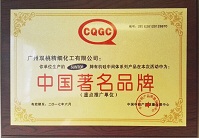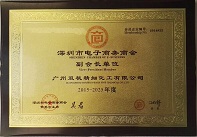
![]() E-mail: admin@gz-chemical.com
E-mail: admin@gz-chemical.com
Email us,best price and silane solutions for you!
Tel:+86 (20) 29035969

![]() E-mail: admin@gz-chemical.com
E-mail: admin@gz-chemical.com
Email us,best price and silane solutions for you!
Tel:+86 (20) 29035969


Recent advances in battery technology, from the engineering of their cases to the
electrochemistry that takes place inside them, has enabled the rapid rise of Teslas,
Leafs, Volts and other electric cars.
Now, scientists at Scripps Research, inspired by the refined electrochemistry of these
batteries, have developed a battery-like system that allows them to make potential
advancements for the manufacturing of medicines.
Their new method, reported today in Science, avoids safety risks associated with a type
of chemical reaction known as dissolving metal reduction, which is often used to produce
compounds used in the manufacturing of medicines. Their method would offer tremendous
advantages over current methods of chemical manufacturing, but until now, has largely be
en sidelined due to safety considerations.
"The same types of batteries we use in our electric cars today were far too dangerous for
commercial use a few decades ago, but now they are remarkably safe thanks to advances
in chemistry and engineering," says Phil Baran, Ph.D., who holds the Darlene Shiley Chair
in Chemistry at Scripps Research and is a senior author of the Science paper. "By applying
some of the same principles that made this new generation of batteries possible, we have
developed a method to safely conduct powerfully reductive chemical reactions that have very
rarely been used on a large scale because—until now—they were too dangerous or costly."
"This could have a major impact on not only the manufacturing of pharmaceuticals," Baran
adds, "but also on the mindset of medicinal chemists who traditionally avoid such chemistry
due to safety concerns. This problem was in fact brought to our attention by co-author
Michael Collins, a medicinal chemist at Pfizer, for precisely this reason."
One of the most powerful reactions, and representative examples of this deeply reducing
chemistry that chemists use to make new molecules is the Birch reduction, which was largely
pioneered by Australian chemist Arthur Birch in the 1940s. This reductive reaction involves
dissolving a reactive metal in liquid ammonia to manipulate ring-shaped molecules that can
be used as the foundation for making many chemical products, including drug molecules.
Guangzhou Double Peach Fine Chemical Co.,Ltd
Address: No 3401 Huangpu East Road, Huangpu District, Guangzhou, China
Tel:+86 (20) 29035969 Fax:+86(20)29035979
Tel/Wechat/Whatsapp:0086 13826126978 admin@gz-chemical.com